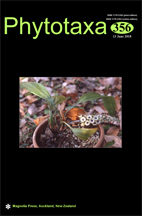Abstract
The genus Aspidistra Ker-Gawler (1822: 628) (Asparagaceae), endemic to East and Southeast Asia, is mainly distributed in southern China and northern Vietnam (Li et al. 2004, Tillich 2006, 2008, 2014, Tillich & Averyanov 2008, Vislobokov et al. 2016). Species of this genus usually set flowers on the ground and hidden in leaves cluster. Flowers of Aspidistra show extremely high diversity in morphological variations. Furthermore, the scentless trait and dull color of flowers of most species make them inconspicuous under forest (Tillich 2005). Relatively, their leaves have lower diversity and taxonomic value. Although individuals of Aspidistra are common under forests in south China and north Vietnam, but it is very difficult to identify them at species level in the field. In recent decades, some scientists have been focusing on this genus and observed the species not only in the field but also in cultivation (Tillich 2005). These combined observations revealed many new species and the number of species known had been dramatically increasing since the 1980s (Lang et al. 1999, Liang & Tamura 2000, Tillich 2008). Just in 2017, at least 11 new taxa including 9 new species and 2 new varieties of Aspidistra were described (Averyanov & Tillich 2017, Averyanov et al. 2017, Lý & Tillich 2017, Lý et al. 2017, Nguyen et al. 2017, Vislobokov et al. 2017, Wang et al. 2017, Xu et al. 2017, Zou et al. 2017). Hitherto, there are around 170 species names of Aspidistra have been accepted based on Lý et al. (2017) and recently published species.

